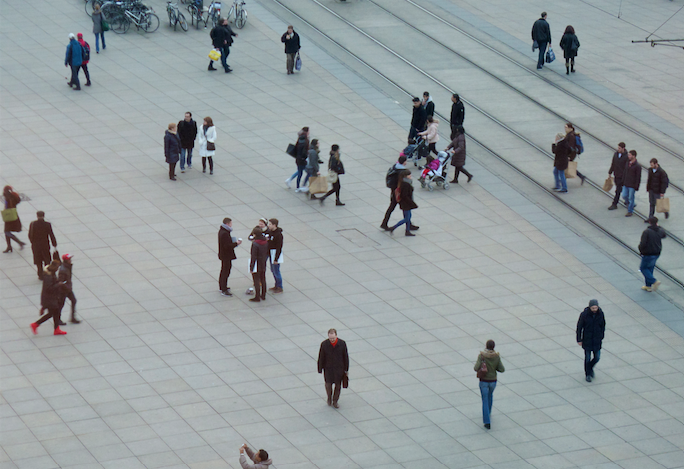The material conditions for spatial sound articulation are not simply given, they are made by people. The architectures of urban spaces are instruments for sound paths, sound reflections and resonance fields. In everyday life they are constantly played upon by sound events that are caused by us. Even if we have all become hearing-blind, occupy the spaces acoustically and hear nothing of the spatial dimensions of the city sounds, our bodies are nevertheless exposed to the spatial sound. The spatial sound is responsible for our physical well-being.
For example, floor coverings are the most important acoustic articulations of the city sound. If most of the floor surfaces are covered by the same asphalt, then the entire sound space becomes very monotonous and one-sided. If large areas of adjacent facades are made of glass, then hard reflections and strong frequency resonance fields prevail. All cars, all human voices, all airplanes, even the birds, sound hard and loud here. There is no reason for the everyday listener to pay attention to this sound space and to assign any meaning to it and to stay here longer than absolutely necessary. Hard-articulated urban spaces are listening spaces.
citation from text by Andres Bosshard in
Stadtklang – Wege zu einer hörenswerten Stadt
1. Perspektiven
2016 VDF Zürich

